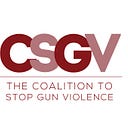California has the tools to prevent gun deaths. It is up to citizens to use them.
Twelve years ago this month, my parents were shot by a man with a history of violence. My dad survived his injuries, but my mom was killed. The saddest part of my story is that it is unremarkable — we hear about tragedies like this every day. A dangerous person was able to tear my family apart because he had easy access to a gun regardless of warning signs.
Recently, we saw a similar tragedy unfold at a San Diego pool party. A 50th birthday party ended in a horrific shooting spree that left one dead and seven wounded. As details emerge, we have learned that — as is often the case — the shooter exhibited warning signs well before the massacre. Family members of the shooter described him as “distraught and depressed” following the end of a relationship a few days earlier. Records have also indicated that he was under severe financial stress. The shooter’s family members seem to have recognized that he was descending into crisis.
The San Diego tragedy felt painfully familiar to me. But unlike 12 years ago, California now has a law that gives family members and law enforcement the ability to temporarily remove guns from a dangerous person before tragedy occurs. If the San Diego shooter’s family members had been aware of the Gun Violence Restraining Order (GVRO), they might have averted tragedy.
The GVRO is an innovative tool that allows family members and/or law enforcement officials to petition a judge to temporarily remove firearms from an individual in crisis. After all, those closest to us are often the first to notice a serious change in behavior. Using the GVRO, concerned relatives can get help for a family member who is descending into crisis for any reason — whether the individual is going through a break-up, abusing alcohol, struggling with financial stress, erupting in violent outbursts, or demonstrating suicidal behavior. The GVRO allows those who are a threat to themselves and/or others to get help and heal without access to lethal weapons.
Modeled after the widely used Domestic Violence Restraining Order, the GVRO was carefully crafted based on what research tells us about risk of violence; the GVRO’s criteria for removal are based on data-driven behavioral risk factors for dangerousness — such as a history of violence — rather than a mental health diagnosis. Using these evidence-based criteria, the GVRO is able to identify individuals at a heightened risk of violence without unfairly stigmatizing those living with mental illness.
California became the first state to pass such a law in September 2014, just six months after a gunman in Isla Vista killed six individuals before turning the gun on himself. Prior to the rampage, the Isla Vista shooter’s family voiced concerns about his behavior and wellbeing; deputies visited his home for a wellness check but did not have the legal tools to temporarily remove his weapons. In the wake of the tragedy, California policymakers acted quickly and decisively to pass GVRO legislation. In doing so, California started a trend. Washington state passed GVRO-style legislation last year, and similar laws have been introduced in 20 states and counting.
In the aftermath of mass shootings like San Diego, it is important to honor the lives of those killed while reflecting on how future tragedies can be avoided. California lawmakers did exactly that in 2014. Now, the onus is on the citizens. A law only works if it is used.
So today, we are proud to share a video (see above) that will introduce more Californians to the GVRO and teach them how to access it. Californians have a gun safety law that doesn’t exist in most parts of the country — a law to separate guns from those who intend to harm themselves or others.
It is up to us to use it. It is up to us to save lives. It is up to us to make sure more families don’t have to experience the pain I continue to feel every day.
For more information on California’s Gun Violence Restraining Order law, visit www.speakforsafety.org
Christian Heyne is the legislative director of the Coalition to Stop Gun Violence. He is a native of Thousand Oaks, California.
